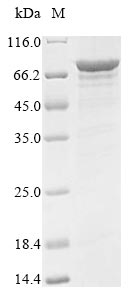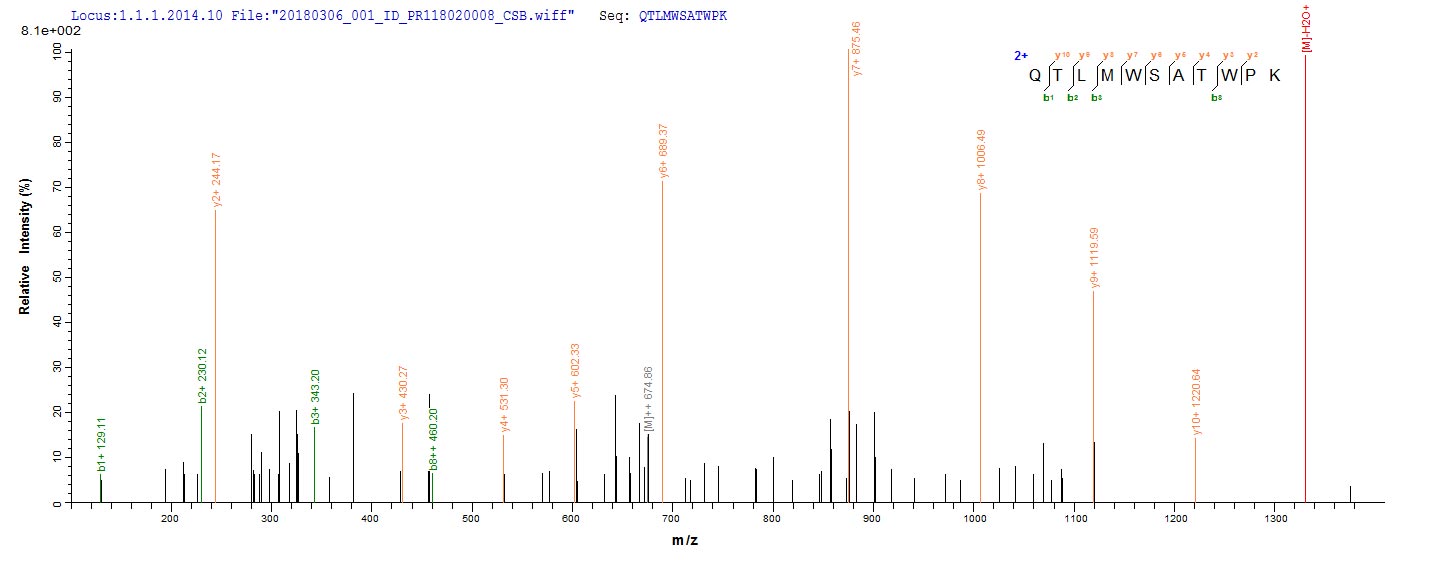Recombinant Human Probable ATP-dependent RNA helicase DDX5 (DDX5) is produced in E. coli and contains the complete protein sequence from amino acids 1 to 614. The protein features an N-terminal 10xHis-tag and a C-terminal Myc-tag that help with purification and detection. SDS-PAGE analysis confirms the product achieves greater than 85% purity, which appears suitable for most research applications.
DDX5, also known as p68, functions as an ATP-dependent RNA helicase. It seems to play a critical role in various cellular processes that involve RNA metabolism. The protein participates in transcriptional regulation, RNA splicing, and ribosome biogenesis. Given its involvement in these fundamental pathways, DDX5 may prove valuable for researchers studying RNA processing and gene expression regulation.
Potential Applications
Note: The applications listed below are based on what we know about this protein's biological functions, published research, and experience from experts in the field. However, we haven't fully tested all of these applications ourselves yet. We'd recommend running some preliminary tests first to make sure they work for your specific research goals.
The human DDX5 is an ATP-dependent RNA helicase that requires precise folding of its DEAD-box helicase domains for ATP binding, RNA unwinding, and protein interaction functions. While E. coli can express soluble proteins, complex multidomain proteins like DDX5 may not achieve native folding without eukaryotic chaperones. The dual tags, particularly the large N-terminal 10xHis tag, may sterically hinder proper domain folding or enzymatic activity. Without experimental validation (e.g., ATPase or helicase assays), the DDX5 protein cannot be assumed to be correctly folded or bioactive.
1. Protein-Protein Interaction Studies Using Pull-Down Assays
The dual tags enable pull-down assays (His-tag for immobilization, Myc-tag for detection), but if DDX5 is misfolded, interactions may be non-physiological. The tags themselves might cause artifactual binding. Validate any identified partners using full-length, properly folded DDX5 from eukaryotic systems (e.g., co-immunoprecipitation from mammalian cells) to ensure biological relevance. Confirm protein folding before use.
2. Antibody Development and Validation
This recombinant DDX5 is suitable as an immunogen for antibody production, as antibodies can recognize linear epitopes even in misfolded proteins. The high purity supports consistent immunization. However, antibodies generated may not bind to native, correctly folded DDX5 in cellular contexts due to conformational differences or tag interference. Validate antibody specificity against endogenous DDX5 in cell lysates or tissues.
3. Biochemical Characterization and Enzyme Kinetics Studies
This application requires confirmed bioactivity. If DDX5 is verified to be active (e.g., via ATP hydrolysis or RNA unwinding assays), it can be used for kinetic studies. However, without activity validation, data on ATP binding or enzyme kinetics are unreliable. The dual tags may also affect enzymatic properties. First, perform functional assays to confirm activity before proceeding with biochemical characterization.
4. Tag-Based Detection Method Development
This application is feasible regardless of folding status, as it focuses on tag functionality. The protein can be used to optimize His-tag purification protocols, Myc-tag detection assays, or dual-tag system validation. However, ensure the protein is soluble and monodisperse for consistent results. This use does not require native folding.
Final Recommendation & Action Plan
Before using this recombinant DDX5 for functional studies (interactions, kinetics), prioritize experimental validation of its folding and bioactivity. Start with functional assays such as ATP hydrolysis or RNA unwinding to confirm enzymatic activity. If active, proceed with interaction or kinetic studies, but include controls like known inhibitors or native DDX5. For antibody development, proceed but validate antibodies against endogenous protein. If inactive, limit use to non-functional applications like tag-based method development or antibody production (with validation). For reliable results, consider expressing DDX5 in a eukaryotic system (e.g., insect or mammalian cells) that supports proper folding. Always validate outcomes with native DDX5 to ensure biological relevance.








